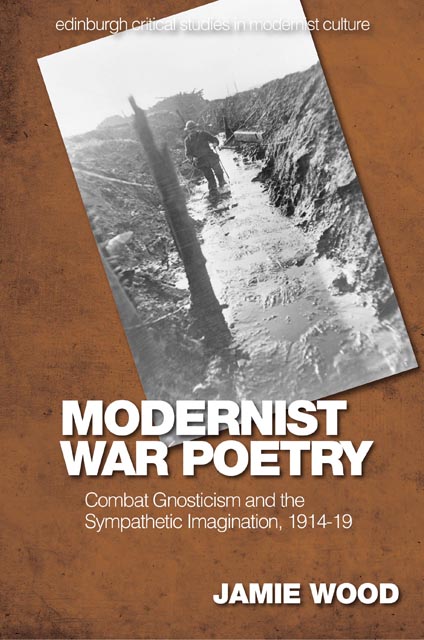
- Publisher:
- Edinburgh University Press
- Online publication date:
- April 2023
- Print publication year:
- 2022
- Online ISBN:
- 9781474497763
- Subjects:
- Historical Linguistics, Language and Linguistics


This study examines the work of the principle architects of Anglo-American modernist poetics - T. S. Eliot, H. D., Ezra Pound, Gertrude Stein, Edward Thomas and Wallace Stevens - and their response to the challenge of combatant war poetries. It argues that these civilian poets sought to negotiate directly with the combatant's gnosticism, specifically with the combatant's assertion that only those present at a catastrophe could properly represent its horrors. The modernists rightly identified that gnosticism was a threat to their own representational claims on an increasingly traumatic modernity. How was the imagination to be salvaged in order that it could still feel into the wounded experience of others? In response to this challenge, the modernists drafted their own imagined war poems, developing in the process several different and contradictory poetic systems. Whereas scholarship ordinarily tells the story of intra-war modern poetry as a series of different schools - the trench lyric, the home front elegy and the modernist long poem - each moving in a different direction, this study brings those traditions back together into one history by treating them as idiosyncratic responses to the same aesthetic problem.
 Loading metrics...
Loading metrics...
* Views captured on Cambridge Core between #date#. This data will be updated every 24 hours.
Usage data cannot currently be displayed.